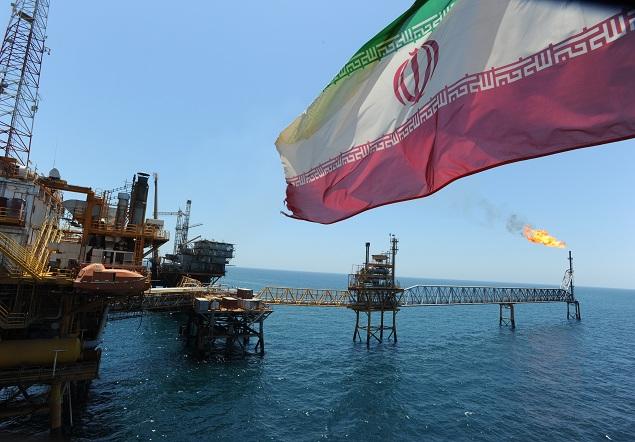The Islamic Republic of Iran (also known as Persia) with recoverable crude oil reserves of nearly 158 billion barrels is the world’s fourth largest country in terms of crude reserves. The country also holds more than 34,000 bcm of natural gas reserves which account for nearly one-fifth of the global proven reserves of natural gas.
With such high volumes of oil and natural gas reserves the country was the second largest oil producer amongst the OPEC members and also the third largest crude oil exporting country of the world till 2011 when economic sanctions and financial transaction hurdles were enforced to thwart any inappropriate development of nuclear technology in Iran. These sanctions eroded the crude sales volume of the founding member of OPEC and the daily crude oil production plummeted in Iran and so did its bargaining power in the international oil and gas trade. However with a new agreement in place the sanctions on crude oil trade with Iran were revoked w.e.f January 15, 2016.

The result has been that Iran has reportedly increased output by 230,000 bpd since December 2015, and some of the largest crude oil importing countries like India increased their annual imports from Iran. Since the sanctions were waived off; over the last 2, months Iran has been receiving investors’ interests for gaining a pie in the promising oil and gas sector of Iran.
With the ongoing daily production of more than 3 million barrels per day of which 1.3 million barrels get exported; the country also is sending favourable signals on its plans to increase the focus on the sector. Besides with the key ongoing expansion projects including Kish and Abouzar field developments North and South Azadegan and South Pars project; the country’s hydrocarbon production potential is seen to be on an exponential growth trajectory.
Further, the country had made it its strategic goal for next 5 years to increase its daily production of crude oil to double of its present production and also increase its daily throughput of natural gas to 1.4 bcm. This would mean a loss of hegemony for any single major oil producer of the world. This would also mean a gain in the ascendancy for the Islamic Republic of Iran as what it held in the pre-sanctions era when Iran used to have a significant influence on the international oil markets.
The country has already invited participation in its capital expansion programs of more than 200 billion dollars for both upstream and downstream oil and gas sector. Nearly 50 countries had expressed interest in the projects and with the support of the government together with the will of the nationals the yester years of Iran’s dominance in the industry are likely to absolve any monopolistic advantage to an individual oil producing nation.
However, there are still a few hurdles present in terms of investors gaining confidence in the country’s efforts to align itself back into the mainstream global trade arena. This is important because even now the United States has continued to impose sanctions on bilateral trade with Iran.
Therefore, it can be concluded that the resurrection of the economy of Iran and its improved stature in the global oil and gas industry largely hinges on the country’s unconditional support to Joint Comprehensive Plan of Action for the agreed monitoring period of fifteen years. Once the political leaders of Iran resolve to not interfere with the legitimacy of the Joint Comprehensive Plan of Action; there appears to be no doubt that Iran will regain its coveted place as a ‘game changer’ in the global oil and gas sector.
The information provided by HiWayFX is for educational purposes only and should not be considered as investment advice.
Recommended Content
Editors’ Picks
EUR/USD edges lower toward 1.0700 post-US PCE

EUR/USD stays under modest bearish pressure but manages to hold above 1.0700 in the American session on Friday. The US Dollar (USD) gathers strength against its rivals after the stronger-than-forecast PCE inflation data, not allowing the pair to gain traction.
GBP/USD retreats to 1.2500 on renewed USD strength

GBP/USD lost its traction and turned negative on the day near 1.2500. Following the stronger-than-expected PCE inflation readings from the US, the USD stays resilient and makes it difficult for the pair to gather recovery momentum.
Gold struggles to hold above $2,350 following US inflation

Gold turned south and declined toward $2,340, erasing a large portion of its daily gains, as the USD benefited from PCE inflation data. The benchmark 10-year US yield, however, stays in negative territory and helps XAU/USD limit its losses.
Bitcoin Weekly Forecast: BTC’s next breakout could propel it to $80,000 Premium

Bitcoin’s recent price consolidation could be nearing its end as technical indicators and on-chain metrics suggest a potential upward breakout. However, this move would not be straightforward and could punish impatient investors.
Week ahead – Hawkish risk as Fed and NFP on tap, Eurozone data eyed too

Fed meets on Wednesday as US inflation stays elevated. Will Friday’s jobs report bring relief or more angst for the markets? Eurozone flash GDP and CPI numbers in focus for the Euro.